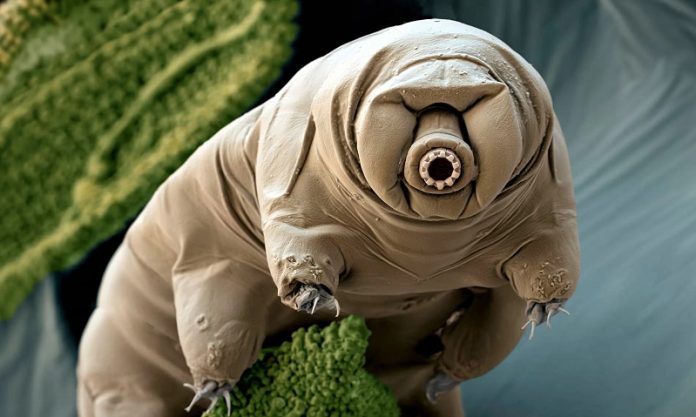
The 2025 Lunar and Planetary Science Conference, which took place from March 10–14 in The Woodlands, Texas, witnessed some very interesting proposals for space exploration and science.
In addition to bold mission concepts, scientists presented exciting opportunities for potential research that addresses major questions.
Not the least of which was “How can humans survive in space and extraterrestrial environments”?
One study in particular presented how the study of tardigrades could help address the challenges involved.
The study was conducted by Isadora Arantes, a NASA ambassador and astronaut candidate; and Geancarlo Zanatta, an Associate Professor at the Federal University of Rio Grande do Sul.
As they indicate, tardigrades (aka. “water bears”) have become the focus of considerable research in recent years.
These extremophiles are renowned for their exceptional resilience to hostile environments. This includes temperatures ranging from -271°C to over 150°C, pressures exceeding 1,200 times atmospheric levels, desiccation, and intense ionizing radiation.
This has made them a pivotal model for astrobiological research and the potential for life beyond Earth. According to Arantes and Prof. Zanatta, specific proteins like Dsup (Damage Suppressor) are key to their resilience.
This protein mitigates DNA damage caused by radiation exposure by forming a protective shield around genetic material, reducing double-strand breaks and preserving genomic integrity.
For the sake of their study, they conducted simulations of the molecular dynamics of Dsup proteins using Gromacs software.
Their results show how the protein prevents genetic mutations by dissipating radiation and minimizing DNA disruptions. Beyond Dsup, they also investigated heat shock proteins (HSPs) and antioxidant enzymes, which maintain protein stability during thermal stress and mitigate oxidative damage caused by high pressure and radiation (respectively).
As they wrote, these findings are indicative of what types of lifeforms may exist in extreme environments beyond Earth:
“[F]indings demonstrate that tardigrades’ resilience mirrors potential life forms in extreme extraterrestrial environments, such as Mars, Europa, and Titan. Mars, with its radiation-rich environment and episodic liquid water, and the icy moons Europa and Titan, with subsurface oceans and cryogenic conditions, serve as benchmarks for understanding extremophile survival.
For example, the stability of proteins in Titan’s subsurface ocean, as explored in related studies, suggests the plausibility of life in aqueous-ammonia mixtures under cryogenic conditions.”
Beyond astrobiology, research into tardigrade adaptation has applications in biotechnology that could make humans more resilient.
This includes improving radiation resistance, protecting against extreme cold in human cells, and engineering crops to survive in extreme climates.
Arantes and Prof. Zanatta add that these applications “highlight the broader relevance of extremophiles in addressing challenges on Earth while contributing to the scientific foundation for future space missions.”
They also note that further research involving integrated computational and experimental approaches is crucial to uncovering extremophile survival mechanisms.
This has the potential to advance our understanding of life’s resilience in extraterrestrial environments.
Written by Matthew Williams/Universe Today.



